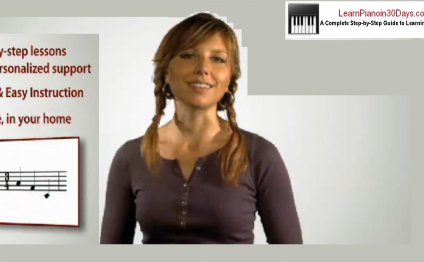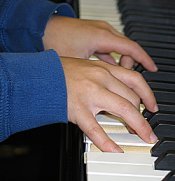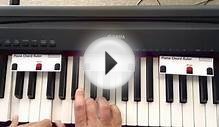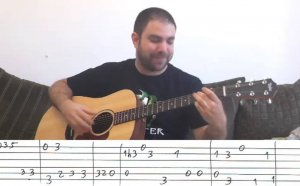
Piano lessons for Beginners
Teaching piano begins with learning, playing, knowing, and loving the piano and the music it can produce. Equally, teaching piano begins with learning about, playing with, knowing, and loving people.
A piano teacher doesn’t necessarily need to be a concert pianist, but they must have some good ideas about how to become one, how to master the instrument and the music. Then, the teacher must appreciate and enjoy the challenges involved with sharing these ideas in ways which help others understand and grow toward learning to play and love the instrument and its music.
“I don’t want to be a concert pianist…” or “I don’t expect my child to be a concert pianist…” are the two most common prefaces to discussions I’ve had with prospective piano students, usually followed by, “I just want to learn how to play.”

Well, the moment a person takes action towards learning how to play the piano, they step onto the same path that every pianist has walked, concert pianist and non-concert pianist alike. It’s a long, winding path, with countless byways and detours along the way. No two people follow the exact same path and everybody starts at a different place on the path, bringing their own set of experiences, character traits, and abilities.
This perspective is an incredibly important one for both the piano teacher and the student. It allows the teacher to approach lessons with the understanding that though every student needs the same basic knowledge and skill development, not every student will respond the same and, even more, every student needs to follow their own musical desires and learn at their own pace. Indeed the pace and progression of learning will be different for every single person.
Ultimately, the products of this understanding are of utmost importance to piano teachers and their students: patience and persistence. Patience and persistence are at the heart of teaching piano and of learning piano. Both are necessary for success at every level, with every detail, big and small.
The book mentioned below, Piano Player... You, contains the elements and the areas of piano study that I have come to find important. If you are pondering being a piano teacher, or just teaching someone else, you might want to read this book to get a better idea how you should approach it.
The Indispensable Elements Of Teaching Piano
As a teacher of piano, you must assume every student is serious enough about learning the piano that you offer each one the necessary elements for mastering the instrument and the music. The following list should be of help to every piano teacher and student as a foundation of developing well-rounded piano and music skills.
Teaching Piano:
Keyboard Geography And finger Numbers
A piano player must know the keyboard. The following items are helpful in developing an intimate knowledge and feel for the keyboard:
-simple songs, taught by rote or tablature, for new students, not yet reading music. Starting on the black notes with single finger bouncing, followed by using multiple fingers on same notes. Go to
for a nice list of songs in tablature form.
-simple exercises (some to be included in the near future on this website.) Easy patterns which should be repeated over and over, ascending & descending on white notes, for beginners. For more advanced students, play patterns ascending and descending in all the different keys. Example: Play Hanon Exercise #1 in all 12 major keys. (Also fun in minor keys, using harmonic or melodic minor)
-scales: Major & MinorSee -Arpeggios and Cadences: every scale should be followed by an arpeggio and cadence. For beginning students, playing the chords of a cadence (I IV V V7 I) in hand-over-hand arpeggios (4 octaves) is not just fun, it develops keyboard awareness like nothing else. For more advanced students, arpeggios should be played with both hands at the same time (start hands-separately, at first). For beginners, the cadence chords should be repeated slowly and hands-separately until they come naturally, with no pauses.
-Major and Minor Triads:See . Students should learn the 12 major triads first, according to what they look like (i.e.: their “keyboard image”), then the 12 minor triads, according to their “keyboard image”. Once the triad shapes and images are completely etched into the pianist’s mind and hands, they can be played chromatically (C, D-flat, D, E-flat, E, F, etc…) ascending and descending, blocked and rolled. Mastering the triads chromatically (at least up to 100 beats per minute, one chord per beat), they should also be played around the circle of 4ths, ascending and descending.
Notice that the above-listed items can all be taught and learned with no music reading. This is extremely important for the development of keyboard awareness and confidence.
Teaching Piano:
Music Reading
-use a good method book and start each student in the appropriate level. See and for ideas on methods. Make sure students understand that the method books are being used for developing their reading skills and to teach them the basics of piano music. Therefore, the student must keep eyes on the music and count out loud at all times.
-Once a student has worked through an entire method series (which should take 4 to 6 years), sightreading skills can be addressed more specifically by finding the appropriate level of literature to practice on. A recent arrival to the advanced level should be sightreading music on a late-elementary level.
-sightreading can only be developed by sightreading. By adding 10 minutes per day to a student’s routine, sightreading skills will improve drastically over a period of 2 to 3 years. Eyes on the music and counting are a must!
Teaching Piano:
Learning And Memorizing Piano Music
The best way for any pianist to learn and memorize piano music is to do it simultaneously. Teach your students how to practice in small links, memorizing right hand, left hand, both on every link. A general rule of thumb for most music from late intermediate down to elementary levels is to divide the music into 2 & 4 measure links for learning and memorizing at the same time. More complex music can be divided into smaller links. (Keep in mind, when learning in links, a student must always overlap at least one beat into the next link.)
-For each student, find music that motivates: MUSIC THE STUDENT LIKES! A good routine would be for the teacher to play several pieces (teacher’s choices) for the student and let the student choose their favorite.
-Choose music that offers a bit of a challenge, but fairly easy success. As students progress, higher levels of challenge may be possible, but it’s never a good idea to frustrate students with music way over their heads.
-See for ideas on music that works with piano students of different levels.
Teaching Piano:
Music Theory
I’ve found that through scales, arpeggios, cadences, music reading, music learning and memorizing, etc… piano students absorb enough music theory, that it is not necessary to focus on written music theory, unless a student really wants to explore writing their own music, or if the student just has a particular love of music theory (such a student I have never had).
As much as written theory exercises might help reinforce music knowledge, I’ve determined that most piano students are very uninspired by such things and their time is much better spent with their hands on the keys, practicing.
YOU MIGHT ALSO LIKE



Share this Post
Related posts
Acoustic Blues Guitar Lessons for Beginners
Every guitar player experiences a major turning point early on in their education. After the requisite, and often times…
Read MoreYouTube Guitar lessons for Beginners acoustic
How to Get the Most from Your YouTube Learning Experience Want to improve your playing, but don’t have money or time to dedicate…
Read More










